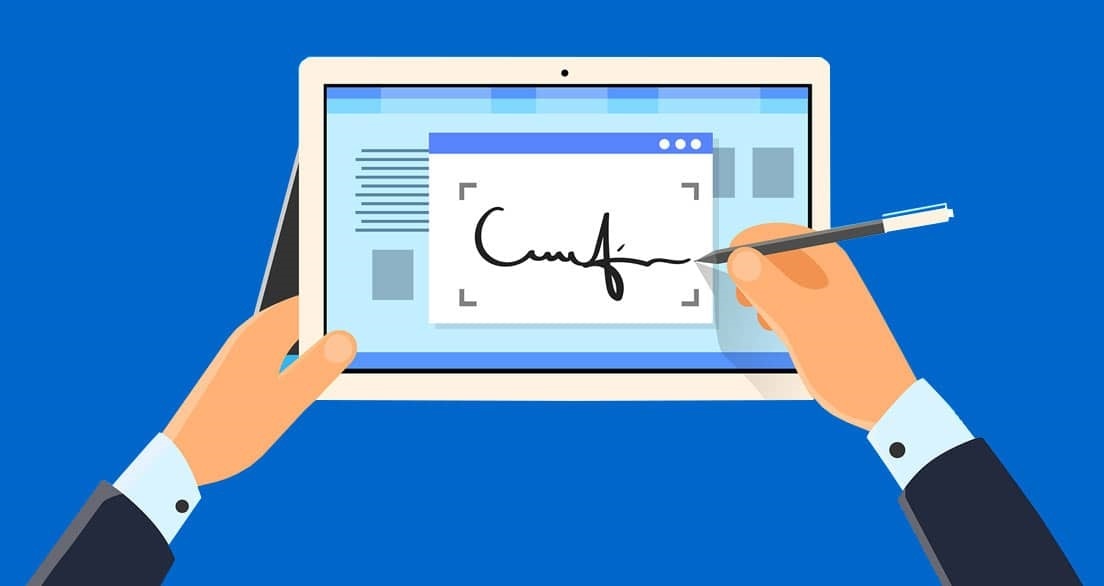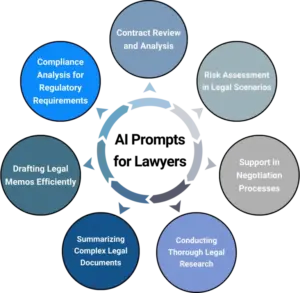In the world of signing documents and making sure they’re legit, there’s an ongoing discussion about using E-Signatures compared to old-school pen-and-paper signatures that catch the interest of folks in different fields. Both ways of signing come with their own set of pros and cons, which are super important when it comes to how well and safely deals are done.
It’s key for anyone trying to keep up with today’s business moves to understand how these signatures have changed over time and what rules apply to them. Let’s dive into this detailed look at what sets E-Signatures apart from traditional signatures, exploring every angle.
Understanding E-Signatures

E-signatures are all about using electronic data to put your signature on documents. This involves a bunch of tech stuff like digital certificates, public key infrastructure, and ways to scramble the information so it stays safe, making sure that when you sign something digitally, it’s legit and secure.
In today’s business world, e-signatures have become super important because they let us sign off on digital papers quickly and safely. They’re really popular worldwide since they make signing stuff easier and faster while keeping everything legal. Plus, they help businesses get things done on time without messing around too much with paperwork.
The Evolution of Electronic Signatures
Electronic signatures have changed the game, keeping up with how fast business moves these days. At first, they were pretty simple, just a way to prove who you are. But now, they’ve gotten super fancy with all sorts of encryption and digital certificates that make them much safer.
With the introduction of Public Key Infrastructure (PKI) and different kinds of electronic signatures, the whole signing process has become not only more secure but also easier to do. Laws like the eSign Act in the U.S., along with rules in Europe, have made sure that using electronic signatures is totally legit and recognized everywhere as an important part of our online world today.
How E-Signatures Work: From Creation to Verification
When we talk about electronic signatures, the whole process from start to finish has a lot of detailed steps. At the beginning, someone gets a digital certificate that includes a public key and some other important details. The person signing uses electronic signature software to put their signature on the digital document in a secure way.
To keep it real and safe from changes, this signature is locked down with strong encryption methods. When checking if everything’s okay with the document, its wholeness is examined and who signed it is confirmed through their digital certificate – this makes sure the e-signature stands as valid.
Related Article: What Is An E-Signature? A Comprehensive Guide To E-Sign In 2024
Exploring Traditional Signatures

When we look into traditional signatures, we’re exploring what handwritten signatures have meant throughout history. By getting to know how these signatures are made and checked, it becomes clear why they’re so important in legal documents. There’s something about putting a signature on paper with ink that has always been the usual way to show you agree with something. This practice of signing by hand has deep roots across different industries, showing a level of trust and adding a personal touch.
The Historical Significance of Handwritten Signatures
For hundreds of years, people have been signing their names on paper to show they agree with something or to prove who they are, especially when it comes to legal documents. Before we had the option to sign things online, everyone used a pen and ink on physical documents like parchment.
These old-school signatures, which some folks call wet signatures, had to be officially stamped by someone in charge so that they were legally binding. Even though we’ve got all sorts of tech now for signing digitally, there’s still something special about doing it the traditional way with ink and paper.
It makes things feel more personal and trustworthy in certain situations where that matters a lot. So even today, as we’re moving fast into digital stuff for efficiency’s sake; these handwritten marks from the past stick around because they mean authenticity and commitment.
The Process of Creating and Verifying a Traditional Signature
When someone wants to make a traditional signature, they simply write their name on paper with a pen or pencil. It’s important that the signature is one-of-a-kind and might look different from person to person.
To check if this kind of signature is real, you have to compare it with one that you know is genuine, looking closely at things like how the lines are drawn and how hard the pen was pressed. You’ll find these signatures all over many fields because they’re often needed on physical documents where a personal touch matters.
Related Article: Best Electronic Signature Software: Top 7 E-Sign Tools In 2024
Legal Framework and Acceptance

Around the world, some laws make sure e-signatures are just as good as traditional ones. In the U.S., we have something called the eSign Act and over in Europe, they’ve got their own rules with the EU’s eIDAS regulation. Both of these set out how electronic signatures can be legally used instead of pen and paper on physical documents.
When it comes to making sure everything is above board, trust service providers along with certificate authorities play a big part. They help ensure that all electronic documents meet high standards for security through encryption which keeps them real and safe from being messed with. As technology moves forward, so do these legal guidelines to keep up with new ways of doing things digitally.
Global Legal Standards for E-Signatures
In the world of e-signatures, it’s really important to follow international legal rules so that digital deals are accepted everywhere. Companies need to stick by laws like the eSign Act in the United States or the eIDAS Regulation in Europe if they want their electronic signatures to be legally recognized.
Trust service providers are key because they check if signed documents are real and make sure everything meets tough standards from different places around the globe.
Comparing Legal Acknowledgment of Traditional vs. E-Signatures
Around the world, whether or not e-signatures are legally accepted changes a lot. In places like the United States and the European Union, there are solid laws in place that recognize electronic signatures. These laws make sure e-signatures can be used safely and will hold up in court.
On another note, traditional signatures have been officially accepted for a long time. But now, as everything is moving online, many areas are updating their rules to include e-signatures too. For any business working in today’s digital world, it’s really important to understand how legal recognition of traditional and electronic signatures differs.
Related Article: What Are Contract Amendments? Best Practices & Benefits
Advantages and Disadvantages of E-Signatures

E-signatures bring a lot to the table, like making digital transactions faster and more efficient. They’re also good for the planet and can help save money. But there are worries about how secure they are and if they make it easier for fraud to happen.
With e-signatures, things move quicker, and businesses find managing documents simpler. However, on the downside, there might be issues with security holes or problems in checking who’s signing off on something when we choose electronic over old-school ways of signing documents.
Speed and Efficiency in Digital Transactions
In the world of online transactions, being quick and efficient is important. Using electronic signatures helps make things faster because you don’t have to swap paper documents around. With tools like public key infrastructure, which uses encryption and authentication, deals can be done quickly and safely.
This speedy way makes sure agreements are finished on time, cutting down how long everything takes by a lot. Industries that need fast contract signings, like healthcare and finance, really benefit from moving their transactions online. As technology gets better, the focus on speed and efficiency in business just keeps growing.
Environmental Benefits and Cost Savings
By using electronic signatures, businesses can do a lot of good for the environment and also save some money. Instead of relying on paper, printing stuff out, and having to physically move documents from one place to another, companies can cut down on their use of resources.
This not only helps in reducing the amount of carbon they put into the air but also means spending less on things like paper and places to keep all those files. On top of that, dealing with paperwork digitally through e-signatures makes everything much quicker and uses fewer resources overall. So it’s not just about being kinder to our planet; it’s also a smart way for businesses to handle their operations without wasting time or money.
Concerns Over Security and Fraud
In the world of electronic signatures, keeping things secure and safe from fraud is a big worry. With more people signing documents online, it’s super important to make sure these signed papers are real and haven’t been messed with. Using encryption, checking who’s signing in, and keeping detailed records help a lot in protecting against changes or someone getting into places they shouldn’t be.
To make everyone trust using electronic signatures and lower the chances of any sneaky business happening, putting strong security steps in place is key. This way, we can all be sure that documents signed electronically are just as good as those done by hand.
Related Article: Best Electronic Signature Software: Top 7 E-Sign Tools In 2024
Advantages and Disadvantages of Traditional Signatures

For centuries, traditional handwritten signatures have been the go-to way to sign documents. They’re known and trusted by everyone as a mark of personal promise and realness. When you see someone’s handwriting on a document, it feels more personal, helping build trust between people involved.
On the flip side, these kinds of signatures come with their own set of problems. For one thing, they need paper documents which can easily get lost or ruined or even stolen sometimes. Also dealing with all those papers – keeping them safe and in order – takes up a lot of time and can cost quite a bit too.
The Personal Touch and Perceived Trustworthiness
When it comes to adding a personal feel, nothing beats the traditional handwritten signatures on documents. They’re like a promise that you mean what you say, making everything seem more real and trustworthy. By signing something yourself, it shows you’re really behind your words or agreement, building trust with whoever sees it. But let’s not forget about electronic signatures; they are super secure and make sure the document stays just as intended without any tampering.
Limitations in Speed and Higher Costs
While traditional handwritten signatures add a personal touch, they’re not as quick or cheap as electronic ones. With the old-fashioned way of signing, you have to physically sign and then send off the paper documents. This can slow things down in business processes if you need to mail them or hand-deliver them.
On top of that, using physical documents means more expenses. Think about all the printing, mailing out, and storing those papers – it adds up quickly! Especially for businesses handling lots of paperwork regularly. So over time, going digital with signatures saves money since there’s less mess with physical things like printing and posting.
Issues with Storage and Accessibility
When it comes to the downsides of using traditional handwritten signatures, one big problem is how we keep and get to those paper documents. For businesses that deal with lots of paperwork, finding a place for all these physical documents can be tough. They take up so much room in the office and you have to be organized so you can find them again when you need them. Plus, if you’re trying to find a specific document later on, it might mean digging through piles of files which eats up your time.
On the flip side, electronic signatures change the game by getting rid of this hassle altogether. With e-signatures, there’s no need for shelves full of physical documents because everything is stored online securely. This makes it super easy and quick to pull up whatever document you need right away – making things run smoother in terms of managing business processes.
Related Article: How To Digitize Your Physical Contracts?
FAQs
Are E-Signatures as Secure as Traditional Signatures?
Are electronic signatures just as safe as the traditional handwritten ones? They are. When you use an electronic signature service like DottedSign, it’s packed with top-notch security features to ensure every signed document is genuine and hasn’t been messed with.
These services bring in encryption to keep things locked down, authentication processes to check who’s signing, and digital certificates that act like a virtual ID for the signer. So long as these safety steps are followed properly, using an e-signature is a secure and officially accepted way to get documents signed without worrying about tampering or questions of authenticity.
Can E-Signatures be Used for All Types of Documents?
E-signatures are a good fit for lots of different documents in various industries. They’re legally okay to use on things like contracts, agreements, consent forms, invoices, and other important papers. This method is accepted in plenty of places and fields such as finance, healthcare, and real estate among others. So when you need to sign something like a lease or give the green light on a business deal electronically signing makes it easy and quick.
Are e-signatures legally binding?
Yes, e-signatures are indeed legally binding. In the United States, laws like the Electronic Signatures in Global and National Commerce Act (ESIGN Act) set the rules for how electronic signatures work.
These regulations make sure that if you follow all the necessary steps for an e-signature, it’s just as good as a traditional handwritten signature when it comes to its legal standing. So basically, with these laws in place, using an electronic signature is officially recognized and can be enforced by law just like any paper-based signature would be.
Conclusion
When considering traditional signatures versus e-signatures, the discussion extends beyond the mere choice between ink and paper or going digital. This debate encompasses the speed and security of each method, as well as their legal acceptability. Traditional signatures offer a personal touch, whereas e-signatures excel in efficiency and cost savings.
Understanding the legal implications and advantages of each type of signature is crucial in today’s business environment. Traditional signatures, with their tangible nature, can convey a sense of authenticity and personal commitment. They are often seen as more reliable in certain situations, such as when physical presence is required, or for notarized documents.
On the other hand, e-signatures provide a modern solution that caters to the fast-paced needs of contemporary business. They enable quick execution of agreements, eliminating the need for physical meetings and reducing delays caused by geographical distances. E-signatures are also more economical, saving on costs related to printing, shipping, and storage of paper documents.





